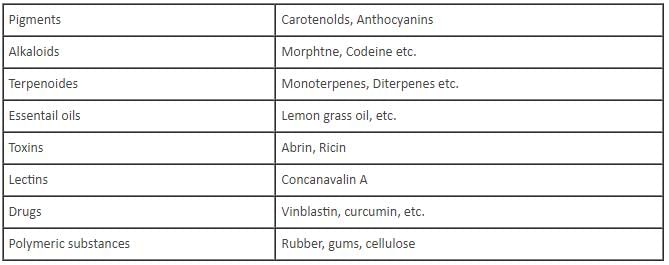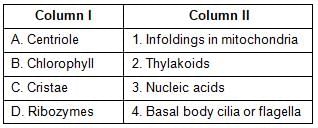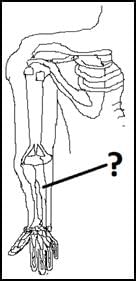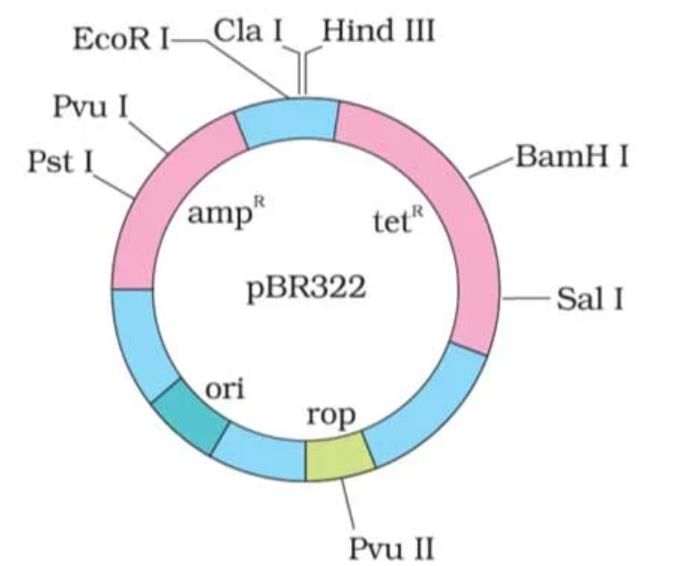SRMJEEE Biology Mock Test - 6 - JEE MCQ
30 Questions MCQ Test - SRMJEEE Biology Mock Test - 6
Which statement accurately describes the sensory capabilities of a frog?
At what atmospheric concentration of CO2 do C4 plants show saturation in photosynthesis?
In the context of co-dominance, what happens when both the IA and IB alleles are present in an individual?
The group of letters that form same words when read both forward and backward are called?
Tanay is diagnosed with a tumor in his parathyroid. He will show out of the following symptoms
i. excretion of calcium in urine
ii. osteoporosis
iii. tetany
iv. deposition of calcium in kidney tubules
The meiocyte of an onion plant contains 32 chromosomes. Calculate the number of chromosomes found in its endosperm?
Read the given statements and select the correct option.
Statement 1: The tumour inducing plasmid (Ti plasmid) acts as a cloning vector in recombinant DNA technology.
Statement 2: The Ti plasmid which is used in the mechanisms of delivering genes to a cell remains pathogenic.
Which function is primarily associated with the anal cerci found in cockroaches?
Which of the following statements is/are incorrect about the electrical synapse?
(i) At electrical synapses, the membranes of pre and post synaptic neurons are in very close proximity.
(ii) Electrical current can flow directly from one neuron into the other across the synapses
(iii) Transmission of an impulse across electrical synapses is very similar to impulse conduction along single axon
(iv) Electrica synapses pass electrical signal between cells with the use of Ach.
(v) Electrical synapses are fast.
(vi) Electrical synapses are rare in our system.
Which of the following is the correct sequence/route of the secretory product?
In which of the following microbes are not used extensively?
I. Converting milk into curd.
II. Making cheese of different flavour and taste.
III. Production of anti-viral drugs.
IV. Production of antibiotics.
V. As bio-fertilizers.
VI. Production of inorganic fertilizers.
The vas deferens receives duct from the seminal vesicle and opens into urethra as
Which type of enzyme catalyzes the transfer of a group (other than hydrogen) between substrates?
Having two antibiotic resistant genes in the same plasmid:
A bilobed dithecous anther had 100 microspore mother cells per microsporangium. How many male gametes can this anther produce?
Directions: Arrange the following events of meiosis in the correct sequence.
I. Terminalisation
II. Crossing over
III. Synapsis
IV. Disjunction of genomes
Assertion (A): Bryophytes are more differentiated than algae and possess structures resembling roots, stems, and leaves.
Reason (R): Bryophytes are primarily aquatic and require water for their entire life cycle.
A and B in pBR322, shown in the diagram given below, respectively represent recognition sequences of:
Consider the following three statements and select the correct option stating which one is true (T) and which one is false (F)
(i) Oparin of Russia and Haldane of England proposed that the first form of life could have come from pre-existing non-living organic molecules (e.g., RNA, protein, etc.) and that formation of life was preceded by chemical evolution
(ii) Based on observations made during a sea voyage around the world, Charles Darwin concluded that existing living forms share similarities to varying degrees only among themselves
(iii) Evolution by natural selection must have started when cellular forms of life with different metabolic capability originated on Earth
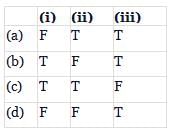
Which of the following developed for the first time in Annelids?
Which of the following statements is/are correct about Class Reptilia?
i. Reptiles primarily exhibit internal fertilization.
ii. The skin of reptiles is dry and covered with scales or scutes.
iii. All reptiles are capable of vocal communication similar to birds.
iv. Reptiles have a three-chambered heart, except for crocodiles which have a four-chambered heart.



